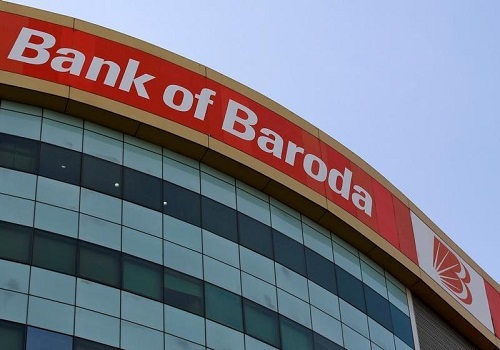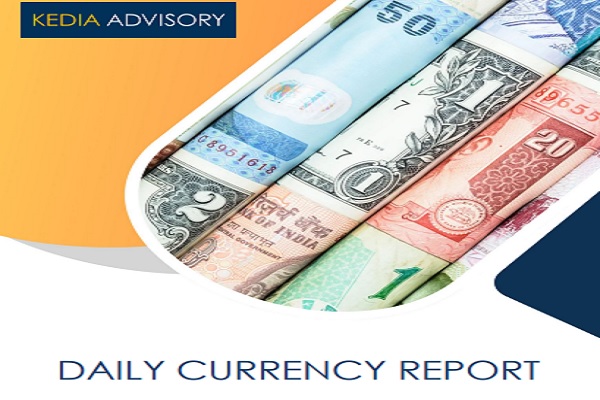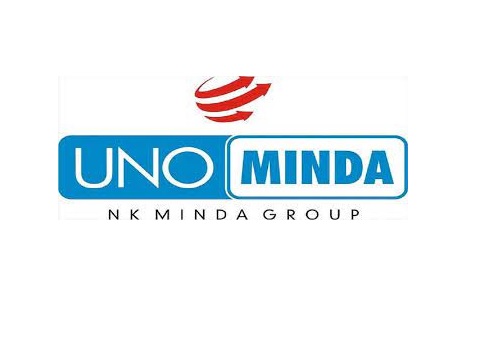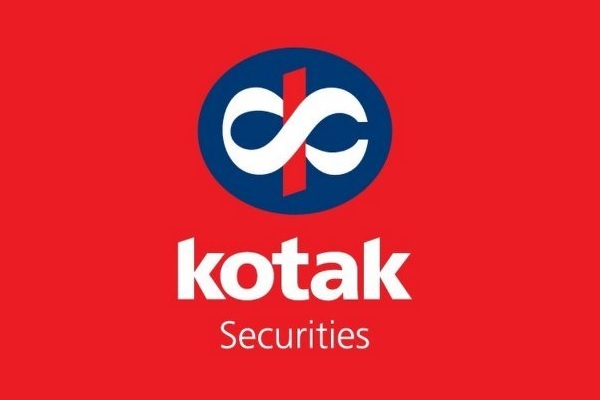Gold trading range for the day is 59960-60860 - Kedia Advisory

GOLD
Gold prices saw a marginal 0.1% decline, closing at 60,537, influenced by a stronger U.S. dollar and rising Treasury yields. These factors weighed on the precious metal. Market participants closely monitored U.S. economic data and Middle East tensions, which added an element of uncertainty. The U.S. private sector surprisingly expanded in October, indicating economic resilience and supporting the case for maintaining restrictive interest rates. In contrast, the Eurozone Composite PMI hit a near three-year low, with Germany's business activity contracting for the fourth consecutive month.Gold remained a sought-after safe-haven asset due to concerns that the Israel-Hamas conflict might escalate into a wider Middle East conflict, given Israel's ongoing actions in Gaza. Investor attention now turns to the upcoming U.S. third-quarter GDP figures and the U.S. PCE price index. These reports could influence the Federal Reserve's outlook on interest rates. As it stands, market expectations are leaning toward the Fed keeping interest rates unchanged in November, as indicated by the CME FedWatch tool. Russia reported holding 75.0 million troy ounces of gold, valued at $140.50 billion at the start of October. From a technical standpoint, the gold market witnessed long liquidation, with a 2.79% decrease in open interest, settling at 14,550 contracts. Prices dropped by 62 rupees. Key support levels for gold are at 60,245 and 59,960, with resistance expected around 60,695, potentially leading to a move to 60,860.
Trading Ideas:
* Gold trading range for the day is 59960-60860.
* Gold dropped hurt by a stronger dollar and elevated Treasury yields
* Traders kept one eye on U.S. economic data and another on tensions in the Middle East.
* Russian gold reserves at 75.0 mln oz as of October 1
SILVER
Silver prices experienced a 0.4% decline, closing at 71,786, influenced by a stronger U.S. dollar and rising yields. Investors are eagerly awaiting key U.S. economic data, including GDP and inflation figures, to gain insight into the Federal Reserve's policy direction. In Europe, the Eurozone Composite PMI hit a near three-year low in October, and German business activity contracted for the fourth consecutive month. In contrast, the S&P Global US Composite PMI suggested a pick-up in private sector output expansion, marking the fastest growth since July. The services and manufacturing sectors contributed to this expansion, with demand at manufacturers improving. The S&P Global US Services PMI also increased in October, indicating growth in the service sector. Employment rose, although new business saw a decline for the third consecutive month, albeit at a slower pace than in September. Service providers experienced a slowdown in charge inflation due to competitive pressures and customer requests for concessions. From a technical perspective, the silver market witnessed fresh selling, with a 3.22% increase in open interest, settling at 18,120 contracts. Prices dropped by 289 rupees. Key support levels for silver are at 71,250 and 70,710, while resistance is expected around 72,085, potentially leading to a move to 72,380.
Trading Ideas:
* Silver trading range for the day is 70710-72380.
* Silver dropped amid stronger dollar and elevated yields, as investors awaited more economic data.
* US Services PMI increased to 50.9 in October 2023 from 50.1 in September, the highest in three months
* In Europe data showed the euro zone Composite PMI fell to a near three-year low in October
CRUDE OIL
Crude oil prices dropped by 2.22%, closing at 6,974, primarily due to diminishing concerns about supply disruptions in the Middle East. Diplomatic efforts are underway to de-escalate the Israel-Hamas conflict, reducing the likelihood of a broader regional conflict. EU leaders are considering a humanitarian truce, with French and Dutch leaders planning visits to Israel. The International Energy Agency (IEA) has stated that current oil storage levels in member states are sufficient to stabilize oil markets if necessary, and there's no immediate need to increase strategic reserve requirements. The IEA stands ready to act in case of supply disruptions but believes current reserves meet the necessary requirements. The IEA also lowered its oil demand growth forecast for 2024 in its October report due to harsher global economic conditions and improved energy efficiency, which could impact consumption. From a technical perspective, the crude oil market experienced fresh selling, with a 27.1% increase in open interest, settling at 5,370 contracts. Prices declined by 158 rupees. Key support levels for crude oil are at 6,864 and 6,755, while resistance is expected around 7,118, potentially leading to a move to 7,263.
Trading Ideas:
* Crudeoil trading range for the day is 6755-7263.
* Crude oil prices declined as concerns about supply disruptions in the Middle East fade.
* Diplomatic efforts are mounting to contain the Israel-Hamas struggle, which could lead to a wider conflict in the region.
* IEA sees enough strategic oil reserves, no action needed for now
NATURAL GAS
Natural gas prices increased by 0.7%, closing at 245.2, driven by expectations of cooler weather and higher heating demand, coupled with near-record liquefied natural gas (LNG) exports. This rise occurred despite record gas production, ample storage, and low spot prices that had been pressuring the market. The Lower 48 U.S. states saw a surge in gas output, reaching 103.9 billion cubic feet per day (bcfd) in October, up from 102.6 bcfd in September. This surge even surpassed the previous record high of 103.1 bcfd in July. Gas production reached a record 106.1 bcfd on a daily basis. While the weather remained relatively mild, it was transitioning to seasonally colder conditions as winter approached. With the expected colder weather, U.S. gas demand, including exports, is projected to increase from 97.0 bcfd this week to 104.6 bcfd next week. However, this forecast for the following week is slightly lower than a previous outlook. Pipeline exports to Mexico have decreased from a monthly record high of 7.2 bcfd in September to 6.9 bcfd in October. Conversely, gas flows to U.S. LNG export facilities rose to 13.6 bcfd in October from 12.6 bcfd in September. From a technical standpoint, the market saw short covering, with a 22.14% decrease in open interest, settling at 15,361 contracts. Prices increased by 1.7 rupees. Key support levels for natural gas are at 242.2 and 239.1, while resistance is expected at 248, with the potential for a move to 250.7.
Trading Ideas:
* Naturalgas trading range for the day is 239.1-250.7.
* Natural gas gains on forecasts for cooler weather and higher heating demand next week
* That small price increase came despite record output, ample storage
* Average gas output in the Lower 48 U.S. states rose to an average of 103.9 billion cubic feet per day (bcfd) so far in October
COPPER
Copper prices rose by 0.43%, closing at 705.85, driven by a global refined copper market deficit of 33,000 metric tons in August, according to the International Copper Study Group (ICSG). This marked an improvement from the 30,000 metric ton deficit in July. However, in the first eight months of the year, the market remained in a 99,000 metric ton surplus, a turnaround from the 313,000 metric ton deficit during the same period the previous year. In August, world refined copper output reached 2.25 million metric tons, while consumption was 2.28 million metric tons. When adjusted for changes in Chinese bonded warehouse inventories, a 34,000 metric ton deficit was observed in August, an improvement from the 39,000 metric ton deficit in July. China's copper cathode production in September increased by 2.3% month-on-month and 11.3% year-on-year. Peru's copper output also surged, up 18.1% year-on-year in the first eight months, with the Cerro Verde mine leading the way. From a technical standpoint, the market saw short covering, with a 1.29% decrease in open interest, settling at 6,795 contracts. Prices increased by 3.05 rupees. Key support levels for copper are at 701.5 and 697.1, while resistance is expected at 708.8, with the potential for a move to 711.7.
Trading Ideas:
* Copper trading range for the day is 697.1-711.7.
* Copper gains as Copper market in 33,000 metric tons deficit in Aug 2023
* LME copper inventories eased to 190,450 tons, but were up 157% from July-end.
* China's copper cathode output in September was 1.01 million mt, an increase of 2.3% month-on-month
ZINC
Zinc prices rose by 0.32% to reach 220.9, driven by short covering. This rebound followed pressure on prices due to a significant increase in the global zinc market surplus. In August, the surplus expanded to 22,000 metric tons from 2,900 tons the previous month, according to the International Lead and Zinc Study Group (ILZSG). The year-to-date global surplus also surged to 489,000 tons, up from 156,000 tons in the same period last year. Additionally, a significant development was the announcement of plans to issue over 1 trillion yuan in government bonds by the Ministry of Finance, aimed at boosting infrastructure investment and economic growth. However, the euro zone experienced a drop in consumer confidence, and Germany's economy was predicted to contract in the third quarter. Domestic zinc ingot inventories currently stand at 102,600 metric tons, but the arrival of imported zinc ingots and domestic smelter-produced ingots may lead to increased supply in the spot market. The Federal Reserve also indicated a delay in future interest rate cuts, while escalating tensions in the Palestinian-Israeli conflict intensified concerns in the capital market. From a technical perspective, the market has witnessed fresh buying, with open interest increasing by 14.76% to settle at 3366. Zinc is now finding support at 220, with a potential test of 218.9 levels if it falls below this. On the upside, resistance is expected at 221.7, and a move above this level could push prices to test 222.3.
Trading Ideas:
* Zinc trading range for the day is 218.9-222.3.
* Zinc prices recovers on short covering after pressure seen as the global zinc market surplus widened
* During the first eight months of the year, the global surplus was 489,000 tons, up from a surplus of 156,000 tons.
* Germany's economy is likely to contract in the third quarter amid falling industrial production, shrinking construction and weak consumption.
ALUMINUM
Aluminum prices saw a 0.74% increase, closing at 204.6, driven by reduced inventories of aluminum ingots and billets in social warehouses. However, it's worth noting that China's aluminum production is nearing its peak at 42.94 million metric tons, suggesting limited short-term growth. Post the National Day holiday, downstream orders did improve, but not to the expected extent. Domestic aluminum ingot inventory dropped to 626,000 metric tons, down by 10,000 metric tons from October 16. Aluminum billet inventory, after significant growth during the holiday, slightly declined to 107,200 metric tons on October 19. On a global scale, primary aluminum output in September rose by 2.7% year-on-year, reaching 5.871 million tonnes. China's aluminum production increased by 5.3% in September, totaling 3.58 million tonnes, with a 3.3% year-on-year rise to 30.81 million tonnes in the first nine months of the year. From a technical perspective, the market is experiencing fresh buying interest, with open interest up by 10.81% at 3617. Prices have risen by 1.5 rupees. Support for aluminum is currently at 203, with a potential test of 201.3 levels if it falls below. On the upside, resistance is expected at 205.6, and a breakthrough could push prices toward 206.5.
Trading Ideas:
* Aluminium trading range for the day is 201.3-206.5.
* Aluminium gains as aluminum ingot and billet pick-ups from social warehouses decreased.
* Aluminium ingot inventory stood at 626,000 mt, down 10,000 mt from October 16
* Global aluminium output rises 2.7% year on year in September
COTTON
Cotton prices experienced a slight dip of -0.24% on the previous day, closing at 57820 due to concerns about China's reduced demand. This decline follows the USDA's report in October, which revised down the U.S. cotton production for 2023/24 to 12.8 million bales, attributing it to lower yields in Texas. An interesting shift noted was that Brazil is expected to surpass the U.S. in cotton production for the first time in history and is nearing overtaking U.S. cotton exports. Additionally, Australia saw a surge in cotton exports to China, capitalizing on improving trade relations. The Cotton Association of India (CAI) updated its crop production estimate for the 2022-23 season, raising it slightly to 31.8 million bales. This estimate contrasts with the government's projection of 34.3 million bales. India is anticipating a cotton production of 330-340 lakh bales for the 2023-24 season. However, some areas in Telangana witnessed reduced cotton cultivation due to unfavorable weather conditions. In the Rajkot spot market, cotton prices closed at 27280.3 Rupees with a -0.24% drop. From a technical perspective, the market showed signs of long liquidation, with open interest remaining unchanged. Cottoncandy's support level is at 57820, and resistance is also at 57820.
Trading Ideas:
* Cottoncandy trading range for the day is 57820-57820.
* Cotton dropped as concerns over demand from top consumer China weighed.
* The USDA also said Brazil's cotton production in 2023/24 will exceed that of the United States for the first time
* Australia's exports of cotton to China ballooned to 61,319 metric tons worth $130 million in August
* In Rajkot, a major spot market, the price ended at 27280.3 Rupees dropped by -0.24 percent.
TURMERIC
Turmeric prices declined by -4.18% to 13,170 Rupees due to favorable weather conditions, which improved crop conditions. However, the potential for unfavorable October weather limits the downside, with expectations of yield losses. Turmeric will be ready for harvest between January and March. The IMD predicts drier-than-average October, impacting crop growth. Stable prices are expected due to current buying activity and decreasing supplies. Export opportunities have improved as demand increased by 25%. A shift in farmer priorities may result in a 20–25% decline in turmeric seeding, particularly in regions like Maharashtra, Tamil Nadu, Andhra Pradesh, and Telangana. Turmeric exports from April to August 2023 increased by 11.51%, reaching 82,939.35 tonnes, compared to 74,377.12 tonnes in the same period in 2022. In August 2023, 11,322.58 tonnes were exported, reflecting an 18.20% drop from July 2023 and a 6.67% decrease from August 2022. In the major spot market of Nizamabad, turmeric prices closed at 13,567 Rupees, marking a modest decline of -0.82%. From a technical perspective, the market experienced long liquidation, with a -3.36% drop in open interest to 13,945. Prices decreased by -574 Rupees. Support for turmeric is at 12,798, with a potential test of 12,424. Resistance is likely at 13,718, and a move above could push prices to 14,264.
Trading Ideas:
* Turmeric trading range for the day is 12424-14264.
* Turmeric prices gained amid improved crop condition due to favorable weather condition.
* However downside seen limited due to the potential for yield losses.
* Support is also evident for improved export opportunities.
* In Nizamabad, a major spot market, the price ended at 13567 Rupees dropped by -0.82 percent.
JEERA
Jeera (cumin) experienced a significant drop of -5.99% to close at 50,995 Rupees per ton due to profit booking and subdued demand, especially in the export market. The sluggish export demand is attributed to global buyers favoring alternatives like Syria and Turkey due to higher Indian cumin prices. India's jeera exports in April-August 2023 fell by 23.76% compared to the same period in 2022, with August 2023 exports showing a 2.61% decline from July 2023 and a substantial 66.98% drop from August 2022. The limited availability of quality cumin crops kept the price decline in check. However, the competitive pricing of Indian cumin is not favoring exporters, and this is expected to hamper export activity in the coming weeks. China, a significant buyer of Indian cumin, has reduced its purchases in recent months, impacting overall Indian cumin exports. Additionally, drier weather in Gujarat is likely to increase cumin arrivals, preventing a significant price increase. According to FISS forecasts, cumin demand is expected to exceed supply this year, with demand projected at 85 lakh bags and supply at 65 lakh bags. In Unjha, a major spot market, the cumin price ended at 55,178.85 Rupees, registering a slight decrease of -0.11%. From a technical perspective, the market is experiencing long liquidation, as open interest has dropped by -4.66% to 4,293. Cumin prices have decreased by -3,250 Rupees. Support for Jeera is currently at 49,890, and a breach of this level may lead to a test of 48,760. On the upside, resistance is expected at 53,250, with potential price targets at 55,480.
Trading Ideas:
* Jeera trading range for the day is 48760-55480.
* Jeera dropped due to profit booking amid subdued demand due to sluggish export demand.
* However, downside seen limited amid limited availability of quality crop.
* Export is likely to remain down in upcoming months as per the export seasonality.
* In Unjha, a major spot market, the price ended at 55178.85 Rupees dropped by -0.11 percent.
Views express by all participants are for information & academic purpose only. Kindly read disclaimer before referring below views. Click Here For Disclaimer










Tag News

Silver trading range for the day is 228770-248770 - Kedia Advisory












